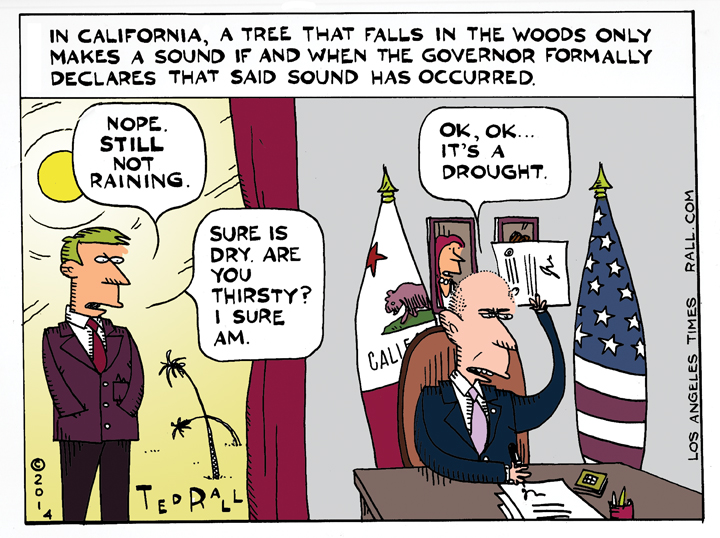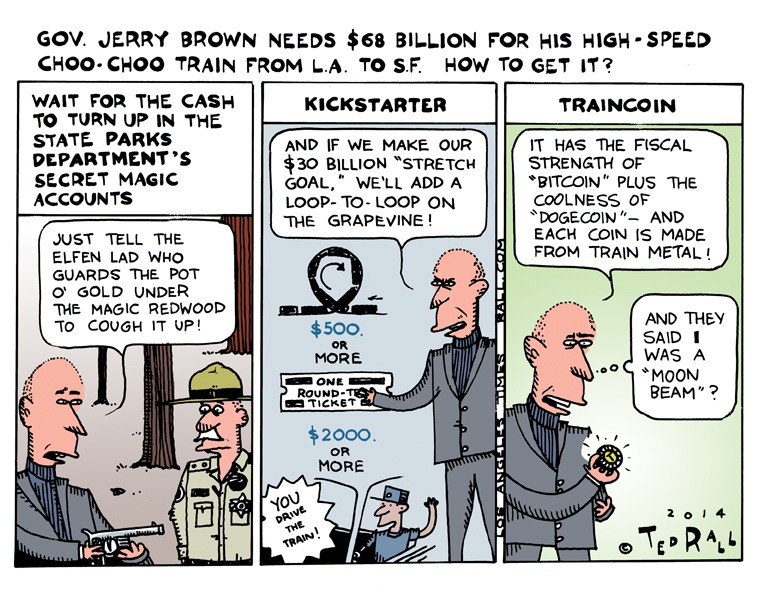I draw cartoons for The Los Angeles Times about issues related to California and the Southland (metro Los Angeles).
This week:
Noting that 2013 went down as the driest year since California began keeping rainfall records, Gov. Jerry Brown has officially declared a drought emergency that asks Californians to reduce their water usage by 20%.
Times columnist George Skelton predicts: “Next comes serious flooding.” Skelton says it’s a familiar pattern: “A drought proclamation, as issued by Gov. Jerry Brown on Friday, changes the political climate. It focuses public attention on the need for costly new waterworks. Therefore governors and water officials are always reluctant to declare a drought over, even when rivers again leap their banks, fill reservoirs and send torrents of muddy snowmelt, uprooted trees and drowned livestock cascading into the Pacific.”
But some state pols say the guv waited too long to unleash the flow of aid to drought-stricken counties. “Today’s drought declaration is better late than never,” said Assembly Republican leader Connie Conway.
Which got me thinking about the concept of disaster declarations. Whether a hurricane destroys the Gulf Coast or an earthquake levels a city or a drought deprives farms and rivers of water, it’s obvious to everyone — the victims, the governor, headline writers — that a disaster has occurred. There’s something inherently silly about having to issue a formal proclamation. (I know, it’s a formality designed to free up state funds and perhaps federal aid as well. Still.) Wouldn’t it be nice to live in a society where everyone could look outside, see that it hasn’t rained for a long time, and say: “Lo! A drought”?
On the other hand — for a cartoonist, nuance is a major intellectual hurdle — should an event that occurs at regular intervals be considered a disaster? When you live along a fault line, for example, you can’t really be shocked shocked shocked when the earth starts moving (unless you’re a state official). As Skelton notes, major sections of California’s climate are subject to the desert’s drought-flood-drought cycle.
Finally, what of whim? Should one man, even the governor, be able to determine, Solomon-like, whether or not Drought is occurring or not? These things keep me up at night, especially when I’m only allowed to drink 80% of my previously allotted water ration. Whatever that amounts to.


